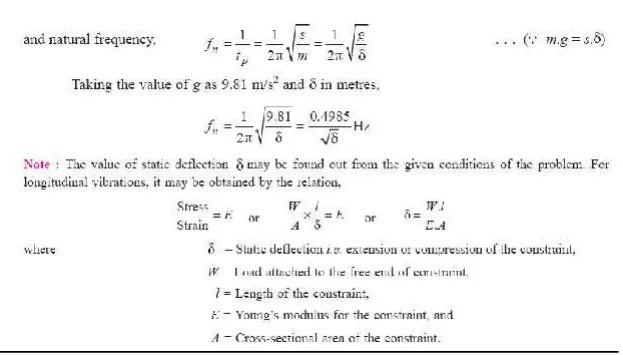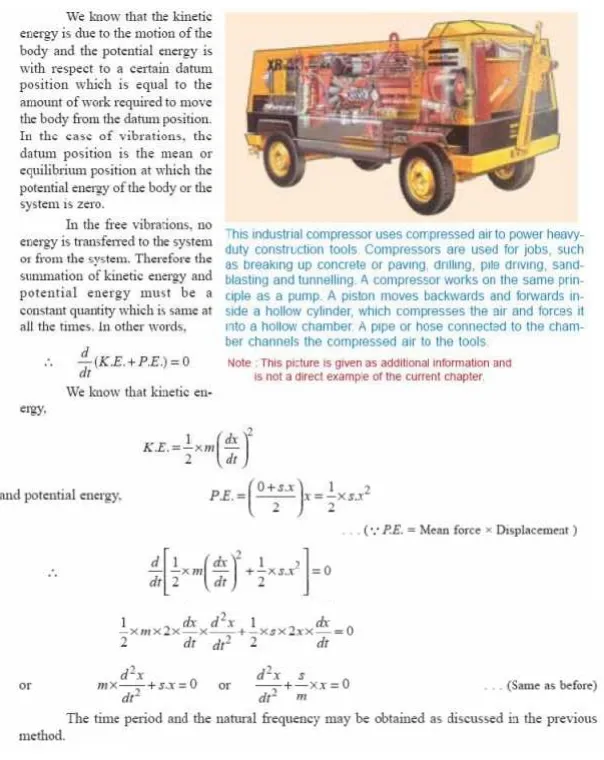
TYPES OF VIBRATORY MOTION:
· Free Vibration
· Forced Vibration
TERMS USED VIBRATORY MOTION:
(a)Time period (or)period of vibration:
It is the time taken by a vibrating body to repeat the motion itself.time period is usually expressed in seconds.
(b) Cycle:
It is the motion completed in one time period.
(c) Periodic motion:
A motion which repeats itself after equal interval of time.
(d)Amplitude (X)
The maximum displacement of a vibrating body from the mean position.it is usually expressed in millimeter.
(e) Frequency (f)
The number of cycles completed in one second is called frequency
DEGREES OF FREEDOM:
The minimum number of independent coordinates required to specify the motion of a system at any instant is known as D.O.F of the system.
Single degree of freedom system:

The system shown in this figure is what is known as a Single Degree of Freedom system. We use the term degree of freedom to refer to the number of coordinates that are required to specify completely the configuration of the system. Here, if the position of the mass of the system is specified then accordingly the position of the spring and damper are also identified. Thus we need just one coordinate (that of the mass) to specify the system completely and hence it is known as a single degree of freedom system.
Two degree of freedom system:

A two degree of freedom system With reference to automobile applications, this is referred as ―quarter car‖ model. The bottom mass refers to mass of axle, wheel etc components which are below the suspension spring and the top mass refers to the mass of the portion of the car and
passenger. Since we need to specify both the top and bottom mass positions to completely specify the system, this becomes a two degree of freedom system.
TYPES OF VIBRATORY MOTION:

Types of Vibration:
(a)Longitudinal vibration
(b)Transverse Vibration
( c)Torsional Vibration.

Longitudinal Vibration:
When the particles of the shaft or disc moves parallel to the axis of the shaft, then the vibrations known as longitudinal vibrations.
Free undamped longitudinal vibrations;
When a body is allowed to vibrate on its own, after giving it an initial displacement, then the ensuring vibrations are known as free or natural vibrations. When the vibrations take place parallel to the axis of constraint and no damping is provided, then it is called free undamped longitudinal vibrations.
NATURAL FREQUENCY OF FREE UNDAMPED LONGITUDINAL VIBRATION:
Equilibrium method or Newton ’ s method :



Energy Method
In free vibrations, no energy is transferred into the system or from the system. Therefore, the total energy (sum of KE and PE)is constant and is same all the times.

3 Rayleigh’s method
In this method, the maximum kinetic energy at mean position is made equal to the maximum potential energy at the extreme position.